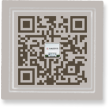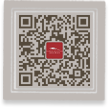- 中文
- EN
- Français
- 日本語
- 한국어
- 繁體中文
The first special exhibition staged in the Hunan Museum after its reopening

The Dawning East-A Joint Exhibition of Collections of the Spring and Autumn and the Warring States Periods, organized by the Hunan Museum in cooperation with 29 cultural institutions and museums nationwide, was grandly opened in the Art Hall of the Hunan Museum in the evening of 28th December, 2017.
The Spring and Autumn and the Warring States Periods was a changing era of turbulence and great transformations, an era in which the new production mode represented by ironware and cattle plowing and an era where Chinese Civilization came into being based on the traditional culture. It is the first large-scale original special exhibition Held by the Hunan Museum after its recently reopening. The museum aims to present visitors an era of great changes which sees the new dynamism being nurtured in place of the outdated system.
Almost 200 distinguished guests, including heads of Hunan Provincial Department of Culture and the Hunan Provincial Bureau of Cultural Heritage, museum employees, board members, senior members and media representatives from 29 cultural institutions and museums were invited to attend the opening ceremony. The opening ceremony was presided over by Li Jianmao, secretary and standing deputy director of the Hunan Museum. On the opening ceremony, Duan Xiaoming, director of the Hunan Museum, Fang Qin, director of the Hubei Provincial Museum, and Chen Yuanping, deputy chief of the Hunan Provincial Department of Culture and director of the Hunan Provincial Bureau of Cultural Heritage delivered speeches respectively.
The Dawning East exhibition boasts 240 pieces or sets of diversified collections from a dozen of municipalities, provinces and autonomous regions including Beijing, Shanghai, Henan, Hebei, Shaanxi, Shanxi, Inner Mongolia, Anhui, Shandong, Zhejiang, Sichuan and Hubei, etc. The exhibition with a carefully designed theme, by means of symbolic cultural relics and a distinctive narrative perspective, aims to highlight the changes in the era compared to the previous society and the ensuing profound influences on the post generations, so as to help the visitors to better feel an era featured by unleashing humanity and infinite vitality.
This exhibition is divided into five chapters. The first chapter, the prologue under the theme of “Collapsing Rites and Music System, Tangled Warfare Among Dukes”, gives an introduction to the historical background. Through a variety of upscale and fancy instruments used by dukes, high ministers and nobles, including the nine ding and eight gui of King of Zheng State, Wang Sun Gao Bronze Bells of Chu State as well as other military equipment such as armors, long weapons and short weapons, this chapter unveils an era when the King of Zhou Dynasty weakened and declined, and the System of Rites and Music serving as the political system was also severely destroyed. As a result, at that time it was no surprise that all dukes rose up to usurp the leadership and were tangled by warfare through this period.
The second chapter, “Discard the Outdated and Nurture the New, Come Back to Life”, mainly describes a scene that the widespread application of ironware greatly pushed forward the development of social productivity, which brought in prosperous business in busy cities. Widespread application of iron-made farm tools such as iron shovel and iron axes significantly improved agricultural productivity. Pentagonal pottery water pipes, L-shaped bronze building components and various eaves tile provide us with an insight into the splendid and magnificent urban architectures over 2000 years ago. And such special pass checks as bronze tallies inlaid with gold of Qi, Prince E, “Jun Yi” (unit of measurement) bronze weights and gold coin Yingyuan unfold the hustle and bustle in cities blessed with flourishing businesses.
The third chapter, with the theme of “Exquisite Craftsmanship and Unleashing Humanity”, starts with new techniques, materials, vessel types and other novel aspects. By bringing in some clarity to the production of ware and crafts, this part illustrates the extraordinary achievements made in different branches of art during this period as well as the unleashing humanity and unspoken aspirations hidden behind. Four joint bronze ding known for its unique design and original style, highly dynamic and ingenious lotus-shaped lacquer dou (food container) with phoenix design, black pottery plate with a bird-shaped column in the middle boasting consummate craftsmanship and deep darkness, and a set of finely-carved jade pendants in delicate structure, all of them are unparallel masterpieces that speak well for craftsmanship as well as people’s pursuit for the beauty of personality.
The fourth part, “Unleashing Thoughts and Cultural Roots”, by means of thread-bound books, bamboo slips, silk manuscripts and other collections, embodies flourishing culture and rich thought in the Spring and Autumn and the Warring States Periods when a hundred schools of thought represented by Confucius, Lao Tzu and Mo-tse contended and exchanged with each other to bring out their best.
The last chapter, also the epilogue, “ Self-identity of the Chinese Nation” reemphasizes the theme by summarizing the exhibition, which implies the end of the old era and heralds in a new era in which order and recognition take the place of chaos and separation. The whole exhibition, through restructuring and interpretation of different sets of ware and crafts, sheds some light on history, helping visitors get a deeper and comprehensive understanding of the Spring and Autumn and the Warring States Period, a special era in Chinese history. 
This exhibition, lasting from 29th December, 2017 to 28th March, 2018, is held in the No.2 Special Exhibition Hall, 1st Floor, Hunan Museum. After buying tickets at the northern entrance, visitors can enter through the special passage for the special exhibition.
Visit information
Exhibition Period: From 29th December, 2017 to 28th March, 2018
Tickets: For Adults, 30 Yuan per person
For students, 15 Yuan per person
Open hours: From Tuesday to Sunday, 9:00—17:00 (last entry at 16:00); the museum is closed on Mondays (except statutory holidays) and on Chinese Lunar New Year’s Eve.
Exhibition Venue: No.2 Special Exhibition Hall, 1st Floor, the Hunan Museum



